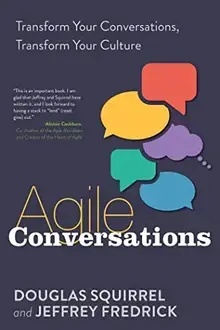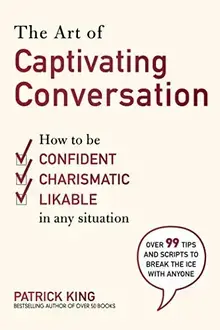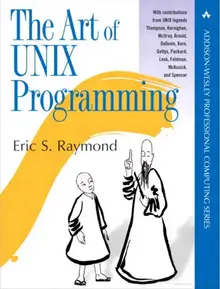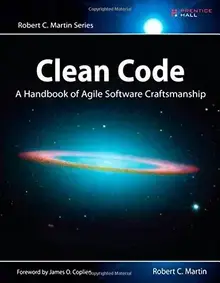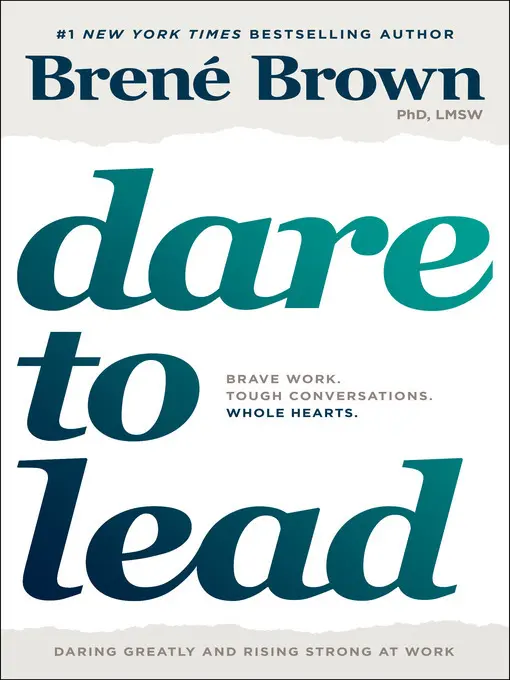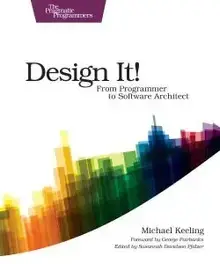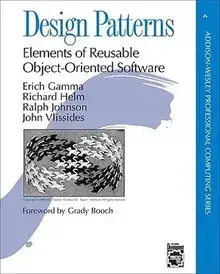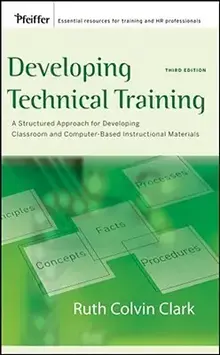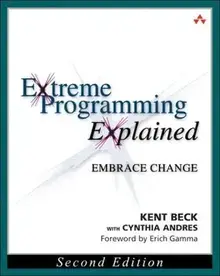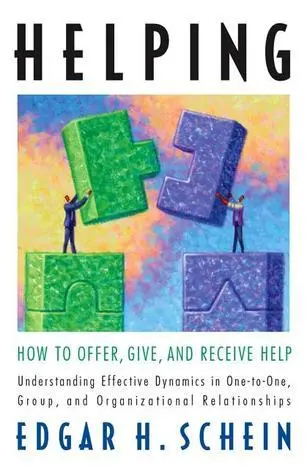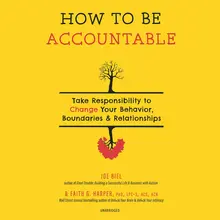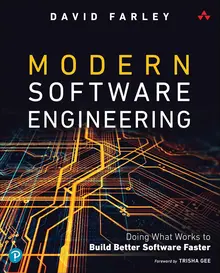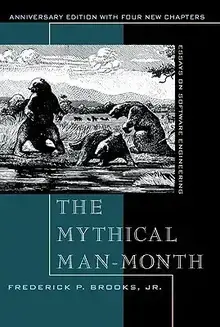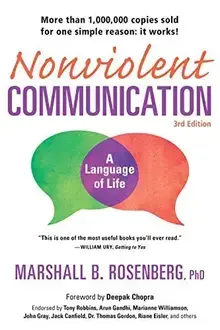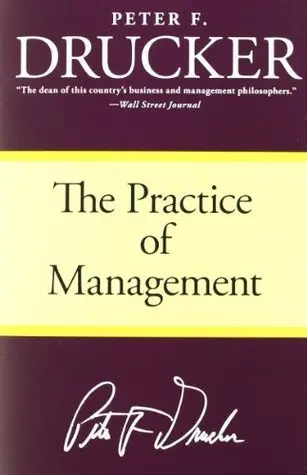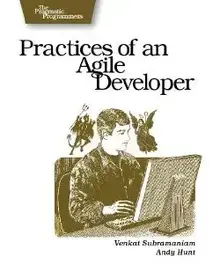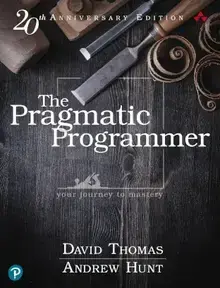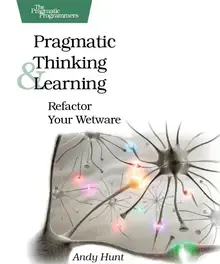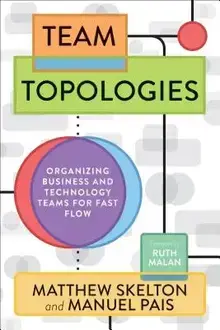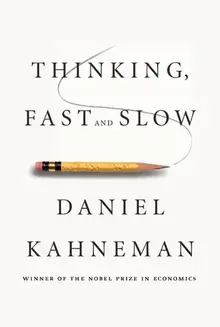Bibliography
Recommended Reading: books to broaden your view
If you enjoy learning and reading, one of the best sections in each book is the bibliography. It contains a list of books that generally link to the topic you were reading about in the first place. As I also like scavenging for new material, I aimed to add a short description to each book referenced here. This will help you figure out why I added it to this list, and whether it is something you’d enjoy digging into deeper.
In order to help you find a book suited to your current skill level, and understanding, I have added suggested “complexity levels” to each of
the books in this bibliography.
The complexity levels are as follows:
- Novice-friendly: These books are ideal for those new to a subject or field. They provide a gentle introduction, starting from the basics
and building foundational knowledge. Concepts are explained in a straightforward manner without assuming prior expertise. Practical examples
and step-by-step instructions are common features.
- Intermediate level: Intermediate books are designed for readers who have some foundational knowledge. They delve deeper into the subject matter, exploring more advanced concepts and techniques.
Readers should have a solid understanding of the basics to fully grasp the content. These books often bridge the gap between beginner and
advanced levels.
- Advanced / In-depth: Advanced books are intended for experienced individuals or those who have already mastered the basics and
intermediate topics. They explore complex and specialized areas in depth. These books assume a high level of prior knowledge and may involve
advanced mathematics, technical jargon, or abstract concepts.
- Reference / Comprehensive Guides: Reference books provide comprehensive coverage of a subject, serving as valuable resources for both
beginners and experts. They often include detailed explanations, case studies, and extensive documentation. Readers can use them to deepen
their knowledge or as ongoing references throughout their career.
- Specialized / Niche: These books cater to specific niches or specialized areas within a field. They may be suitable for individuals with a
particular interest or expertise in a narrow domain. Prior knowledge and experience relevant to the niche may be required.
- Mixed: Some books may combine content that spans multiple levels, offering a comprehensive learning experience. They often include introductory chapters for beginners and progressively more advanced topics. Such books can be valuable for readers looking to deepen their expertise in a specific subject.
List of books
The 7 Habits of Highly Effective People
Powerful Lessons in Personal Change
Covey, S. R.; Collins, J. (2004) The 7 Habits of Highly Effective People. Free Press. isbn: 0743269519.
Stephen R. Covey’s enduring classic examines seven habits that compound into personal and professional effectiveness. He highlights mindful time management, intentional trade-offs, and proactive planning that keep commitments aligned with values. Reflection prompts encourage readers to define who they want to become and translate insight into everyday habits.
Agile Conversations
Transform Your Conversations, Transform Your Culture
Squirrel, D.; Fredrick, J. (2020) Agile Conversations. IT Revolution Press. isbn: 1942788975.
Agile Conversations starts from the idea that every organisational bottleneck is a conversation problem. Drawing on their Troubleshooting Agile coaching work, Jeffrey Fredrick and Douglas Squirrel offer five dialogue formats that surface assumptions, align intent, and rebuild trust. The techniques target software leaders yet apply to any team that needs candid, outcome-oriented conversations.
Apprenticeship Patterns
Guidance for the Aspiring Software Craftsman
Hoover, D.; Oshineye, A. (2009) Apprenticeship Patterns. O'Reilly Media, Inc.. isbn: 978-0596518387.
Perfect for developers moving into new teams or roles, Apprenticeship Patterns offers practical guidance on integrating quickly and contributing meaningfully. The authors package each lesson as a named pattern, complete with suggested actions and reflection prompts. One memorable example, “Sweep the Floor,” encourages craftspeople to tackle humble work early so they can earn trust and accelerate their learning.
The Art of Captivating Conversation
How to Be Confident, Charismatic, and Likable in Any Situation
King, P. (2020) The Art of Captivating Conversation. Skyhorse. isbn: 1510729062.
Patrick King treats small talk as a learnable skill for building trust, influence, and connection. He offers tactics for opening conversations, sustaining curiosity, and reading social cues without sliding into manipulation. The advice is direct yet practical, aimed at readers who find casual conversation draining or awkward.
Raymond, E.S. (2003) The Art of Unix Programming. Addison-Wesley. isbn: 978-0131429017.
The Art of Unix Programming captures the Unix philosophy through essays on simplicity, modularity, and composability. Eric S. Raymond profiles successful tools and communities to show how small programs that do one thing well combine into powerful systems. The collection remains a valuable reference for developers who want to design software with clear boundaries and reusable interfaces.
Atomic Habits
An Easy & Proven Way to Build Good Habits & Break Bad Ones
Clear, J. (2018) Atomic Habits. Avery. isbn: 0735211299.
James Clear breaks habit formation into small, compounding actions linked to identity, cues, cravings, and rewards. He offers frameworks such as habit stacking and environment design to make good behaviours easier and bad ones harder. The book helps readers build sustainable routines whether they want personal growth or team-level improvements.
Automate the Boring Stuff with Python
Practical Programming for Total Beginners
Sweigart, A. (2019) Automate the Boring Stuff with Python. No Starch Press. isbn: 1593279922.
Al Sweigart introduces Python by solving everyday automation tasks such as sending emails, cleaning up files, and manipulating spreadsheets. Each chapter pairs a concise language lesson with hands-on projects so readers can see results quickly. It is written for self-taught professionals who want to remove repetitive chores without needing a computer science background.
Behind Closed Doors
Secrets of Great Management
Rothman, J.; Derby, E. (2005) Behind Closed Doors. The Pragmatic Bookshelf. isbn: 978-0976694021.
Behind Closed Doors follows interim manager Sam as he steadies a struggling team and rebuilds trust. Johanna Rothman and Esther Derby show how purposeful one-on-ones, visual management, and timely feedback change the team’s trajectory. The narrative makes core management habits accessible and easy to adapt to your own context.
Clean Code
A Handbook of Agile Software Craftsmanship
Martin, R. C. (2008) Clean Code. Pearson. isbn: 978-0132350884.
Clean Code advocates for readable, maintainable software through small, disciplined practices. Robert C. Martin demonstrates naming, function extraction, and test-first habits that keep code easy to change while cautioning against dogma. Treat it as a set of guiding principles to inspire teams, adapting the advice to modern tooling and context.
Dare to Lead
Brave Work. Tough Conversations. Whole Hearts.
Brown, B. (2018) Dare to Lead. Random House. isbn: 978-0399592522.
Brené Brown translates her research on vulnerability and courage into a leadership playbook that centres trust, empathy, and accountability. The book offers practical tools for naming hard topics, building inclusive rituals, and creating the psychological safety required for teams to do meaningful work together.
Design It
From Programmer to Software Architect
Keeling, M. (2017) Design It. The Pragmatic Bookshelf. isbn: 1680502093.
Design It follows a fictional project to illustrate how software architects balance stakeholder goals, constraints, and technical options. Michael Keeling mixes facilitation techniques, documentation strategies, and decision records so architects can make their thinking transparent. It serves both aspiring architects and experienced leads who want a modern, collaborative toolkit.
Design Patterns
Elements of Reusable Object-Oriented Software
Gamma, E.; Helm, R.; Johnson, R.; Vlissides, J. (1994) Design Patterns. Addison-Wesley Professional. isbn: 978-0201633610.
Often called the Gang of Four book, Design Patterns catalogues reusable solutions for object-oriented systems. Each pattern outlines intent, structure, and trade-offs so teams can spot when the guidance helps and when it adds unnecessary complexity. Despite its age, the catalogue remains a foundational reference for developers who need shared language around extensibility and maintainability.
Developing Technical Training
A Structured Approach for Developing Classroom and Computer-based Instructional Materials
Clark, R. C. (2007) Developing Technical Training. Pfeiffer. isbn: 978-0787988463.
Developing Technical Training provides a structured approach to designing instructor-led and computer-based programmes that change behaviour. Ruth Colvin Clark walks through analysis, design, development, implementation, and evaluation with checklists, templates, and case studies. It remains a reliable reference for instructional designers who need repeatable processes and engaging materials.
Drive
The Surprising Truth About What Motivates Us
Pink, D. H. (2009) Drive. Riverhead Books. isbn: 9781594488849.
Drive explores why carrot-and-stick incentives underperform in modern knowledge work. Daniel H. Pink synthesises research around autonomy, mastery, and purpose, showing how these three motivators sustain energy and creativity. Leaders and individual contributors alike can use the insights to design environments where motivation grows instead of fades.
Ryan, T. (2019) Driving Technical Change. The Pragmatic Bookshelf. isbn: 978-1934356609.
Driving Technical Change tackles the challenge technologists face when they see a better way forward but cannot get others onboard. Terrence Ryan profiles common resistance personas and shows how to package experiments, evidence, and storytelling for each audience. The guidance equips experienced developers to become thoughtful change agents who elevate their teams and organisations.
Holiday, R. (2016) Ego Is the Enemy. Portfolio. isbn: 978-1591847816.
Ego Is the Enemy translates Stoic principles into modern stories about ambition, humility, and resilience. Holiday draws from historical and contemporary case studies to show how unchecked ego can derail careers, teams, and personal growth. The blend of inspiration and cautionary tales invites readers to ask whether they want to do something meaningful or simply be seen as important.
Extreme Programming Explained
Embrace Change
Beck, K.; Andres, C. (2004) Extreme Programming Explained. Addison-Wesley. isbn: 978-0321278654.
Extreme Programming Explained centres on daily engineering practices—pairing, test-driven development, continuous integration—that keep teams adaptable. Kent Beck and Cynthia Andres advocate short feedback loops, shared ownership, and sustainable pace instead of rigid process prescription. It remains a key reference for developers who want to ground agile values in concrete software practices.
The Five Dysfunctions of a Team
A Leadership Fable
Lencioni, P. (2009) The Five Dysfunctions of a Team. Winsome Book India. isbn: 978-8126522743.
The Five Dysfunctions of a Team explores how trust, conflict, commitment, accountability, and results form a tightly coupled system. Patrick Lencioni tells a leadership fable about an executive team that slips into dysfunction, then demonstrates facilitation techniques to reverse the spiral. It is a quick read for leaders and team members who want to spot warning signs early and restore performance.
Get Better at Anything
12 Maxims for Mastery
Young, S. H. (2024) Get Better at Anything. Harper Business. isbn: 978-0063256675.
“Get Better at Anything: 12 Maxims for Mastery” guides readers through the process of mastering a skill using a set of practical maxims.
These maxims include “The best way to learn is to do,” “Experience doesn’t ensure expertise,” “Feedback is king,” and “The mind is not a muscle.”
Young effectively conveys the importance of deliberate practice and the necessity of fast feedback loops in a clear and concise manner.
The author writes in an approachable style, simplifying complex ideas for easy understanding. He debunks widely held misconceptions
and offers practical advice on enhancing the learning process. Filled with real-world examples and actionable insights,
this book is a must-read for anyone looking to improve their skills and serves as a valuable reference for educators,
coaches, and mentors who help others in their learning journey.
Whether you’re aiming to excel in a hobby or advance professionally,
Young’s guidance will equip you with the tools needed for continuous improvement.
Getting Things Done
The Art of Stress-Free Productivity
Allen, D. (2015) Getting Things Done. Penguin Books. isbn: 0143126563.
Getting Things Done outlines David Allen’s trusted workflow for capturing commitments and creating mental space. He shows how to collect open loops, clarify work into outcomes and next actions, and review regularly to stay aligned. The method helps readers reduce stress, focus on meaningful priorities, and tailor a system that fits their context.
Helping
How to Offer, Give, and Receive Help
Schein, E. H. (2011) Helping. Berrett-Koehler Publishers. isbn: 978-1605098562.
Helping examines the dynamics between the helper and the person receiving support, emphasising humility and curiosity. Edgar H. Schein outlines different modes of help—from expert advice to process consulting—and explains when each builds trust or creates dependence. The guidance helps coaches, managers, and teammates offer support without disempowering others.
Harper, F. G.; Biel, J. (2020) How to Be Accountable. Blackstone Publishing. isbn: 978-1665036573.
How to Be Accountable explains what meaningful accountability looks like in personal and professional relationships. F. G. Harper and J. Biel blend psychological insight with exercises for noticing patterns, making amends, and rebuilding trust. It is a supportive guide for people who want practical steps toward integrity and repair.
Manage It!
Your Guide to Modern, Pragmatic Project Management
Rothman, J. (2007) Manage It!. Pragmatic Bookshelf. isbn: 978-0978739249.
Manage It! provides pragmatic project-management practices for teams delivering software under pressure. Johanna Rothman blends real-world case studies with lightweight planning tools so you can balance risk, delivery, and learning without adding bureaucracy. It is a handy reference when you need structure that still leaves room for experimentation.
Modern Software Engineering
Doing What Works to Build Better Software Faster
Farley, D. (2021) Modern Software Engineering. Addison-Wesley Professional. isbn: 978-0137314911.
Modern Software Engineering reframes development as a disciplined, experiment-driven activity built on fast feedback. Dave Farley connects lean principles with practices such as trunk-based development, test automation, and continuous delivery pipelines. The book serves as a reference for teams that want to scale quality without sacrificing speed.
The Mythical Man-Month
Essays on Software Engineering, Anniversary Edition
Brooks, F. P. Jr. (1995) The Mythical Man-Month. Addison-Wesley Professional. isbn: 978-0201835953.
Frederick P. Brooks Jr. blends project folklore with data in a collection of essays that explain why complex software efforts slip. He challenges comforting myths about staffing, communication overhead, and conceptual integrity; adding people to a late project, he argues, only makes it later. The anniversary edition remains a staple reference for leaders who need common-sense heuristics to steer ambitious delivery work.
New Programmer's Survival Manual
Navigate Your Workplace, Cube Farm, or Startup
Carter, J. (2011) New Programmer's Survival Manual. The Pragmatic Bookshelf. isbn: 978-1934356814.
New Programmer’s Survival Manual tackles the questions junior developers face when they land their first professional role. Carter explains how to build credibility, get oriented in unfamiliar environments, and avoid common corporate-culture traps. Practical advice on communication, learning plans, and career stewardship helps readers chart deliberate growth from the start.
Nonviolent Communication
A Language of Life
Rosenberg, M. B. (2015) Nonviolent Communication. PuddleDancer Press. isbn: 978-1892005281.
Nonviolent Communication teaches empathic dialogue that surfaces needs without judgement or blame. Rosenberg encourages beginning with compassionate self-talk, then expressing observations, feelings, needs, and requests clearly. The sentence structures may feel formal at first, yet with practice the approach becomes a practical way to build understanding in everyday conversations.
Patterns, Principles, and Practices of Domain-Driven Design
Implementing Domain-Driven Design in .NET
Millett, S.; Tune, N. (2015) Patterns, Principles, and Practices of Domain-Driven Design. Wrox. isbn: 1118714709.
Scott Millett and Nick Tune provide a comprehensive guide to applying domain-driven design within .NET ecosystems. They connect strategic patterns—bounded contexts, context mapping—with tactical constructs such as aggregates, domain services, and events. Depth and detailed examples make this a later-stage read for engineers ready to align code with business language across large systems.
Drucker, P. F. (2006) The Practice of Management. Harper Business. isbn: 978-0060878979.
The Practice of Management frames management as a discipline grounded in purpose, accountability, and attention to people. Peter F. Drucker explains how to set objectives, measure performance, foster innovation, and build organisations that learn. Despite its age, the book remains a reference for leaders who want timeless principles to balance strategy and execution.
Practices of an Agile Developer
Working in the Real World
Subramaniam, V.; Hunt, A. (2006) Practices of an Agile Developer. Pragmatic Bookshelf. isbn: 978-0974514086.
Venkat Subramaniam and Andy Hunt distill pragmatic habits for thriving on agile teams that ship inside real-world organisations. Each short practice pairs a warning sign with a concrete remedy, helping teams balance craft, collaboration, and delivery pressure. The authors emphasise communication, iteration discipline, and continuous learning so developers stay effective when constraints mount.
The Pragmatic Programmer, 20th Anniversary Edition
Your Journey to Mastery
Thomas, D.; Hunt, A. (2019) The Pragmatic Programmer, 20th Anniversary Edition. Addison-Wesley Professional. isbn: 978-0135957059.
Widely regarded as one of the definitive books on software development, The Pragmatic Programmer
by Andy Hunt and Dave Thomas distills decades of pragmatic software craftsmanship.
Presented in an approachable, conversational style, this revised edition remains essential reading for developers at any stage.
The authors span coding techniques, architecture, project management, and career habits, weaving actionable advice with memorable anecdotes.
Their guidance helps developers deliver elegant, maintainable code while staying adaptable—and keeping their sanity intact.
Pragmatic Thinking and Learning
Refactor Your Wetware
Hunt, A. (2008) Pragmatic Thinking and Learning. The Pragmatic Bookshelf. isbn: 978-1934356050.
Pragmatic Thinking and Learning examines how developers can harness the way their brains absorb and apply new ideas. Andy Hunt shares techniques from decades of practice—ranging from deliberate experimentation to reflective journalling—to keep skills sharp. It treats learning as the professional’s main tool, encouraging readers to tailor habits and discover systems that fit their own preferences.
Prisoners of Our Thoughts
Viktor Frankl's Principles for Discovering Meaning in Life and Work
Pattakos, A.; Dundon, E. (2017) Prisoners of Our Thoughts. Berrett-Koehler Publishers. isbn: 1626568804.
Prisoners of Our Thoughts translates Viktor Frankl’s logotherapy into practical principles for modern work and life. Alex Pattakos and Elaine Dundon show how meaning, choice, and responsibility help people navigate adversity without losing their identity. Frankl’s assertion that no one can take away your freedom to choose your response anchors each story and reflection exercise.
Refactoring
Improving the Design of Existing Code
Fowler, M.; Beck, K.; Brant, J.; Opdyke, W.; Roberts, D. (2012) Refactoring. Addison-Wesley Professional. isbn: 978-0133065268.
Refactoring teaches how to improve existing code safely by taking small, behaviour-preserving steps. Martin Fowler and collaborators catalogue common code smells, explain when to refactor, and demonstrate each transformation with tests. The examples use Java (and newer editions TypeScript), but the principles apply across languages whenever teams need cleaner design.
The Secrets of Consulting
A Guide to Giving and Getting Advice Successfully
Weinberg, G. M. (1985) The Secrets of Consulting. Dorset House Publishing. isbn: 0932633013.
Gerald Weinberg shares consulting stories that double as heuristics for giving advice clients can actually use. He distils principles such as diagnosing the real problem, pricing for credibility, and running safe-to-learn experiments before prescribing change. The vignettes balance humour with practical wisdom, making the lessons memorable for anyone who influences without formal authority.
Argyris, C. (1991) Teaching Smart People How to Learn. Harvard Business Review.
Chris Argyris explains why highly skilled professionals often resist feedback and how facilitators can create space for double-loop learning. He shares interventions coaches can use to surface reasoning, challenge defensive routines, and turn setbacks into shared insight. The essay remains essential for leaders guiding experts through change.
Team Topologies
Organizing Business and Technology Teams for Fast Flow
Skelton, M.; Pais, M. (2019) Team Topologies. It Revolution Press. isbn: 9781942788829.
Team Topologies evolves DevOps topology work into a practical playbook for structuring teams and interactions. Matthew Skelton and Manuel Pais describe four fundamental team types and three interaction modes designed to improve flow and reduce cognitive load. Case studies show how intentional boundaries and communication paths accelerate delivery in complex organisations.
Mellor, A. (2023) Test-Driven Development with Java. Packt Publishing. isbn: 978-1803236230.
Test-Driven Development with Java introduces TDD by walking through practical Java projects. Allan Mellor explains how to write meaningful unit tests, refactor with confidence, and weave TDD into a modern toolchain. Clear walkthroughs and exercises help developers build habits that keep codebases reliable and easy to change.
The Fearless Organization
Creating Psychological Safety in the Workplace for Learning, Innovation, and Growth
Edmondson, A. C. (2018) The Fearless Organization. Wiley. isbn: 978-1119477242.
Amy Edmondson distills decades of research on psychological safety into a guide for leaders who want teams to learn faster and surface difficult truths. Case studies and diagnostics demonstrate how deliberate facilitation, rapid feedback loops, and shared accountability unlock experimentation without fear of blame.
Abrahams, M. (2023) Think Faster, Talk Smarter. S&S/Simon Element. isbn: 978-1668010303.
Think Faster, Talk Smarter tackles the anxiety of answering on the spot during meetings, interviews, and presentations. Matt Abrahams blends improv exercises, message maps, and rehearsal techniques so speakers can organise thoughts quickly without freezing. The guidance is approachable for anyone who wants clearer, more confident spontaneous communication—not just formal presenters.
Kahneman, D. (2011) Thinking, Fast and Slow. Farrar, Straus and Giroux. isbn: 978-0374275631.
Thinking, Fast and Slow distils decades of behavioural research into the dual-system model of thinking. Daniel Kahneman explains common cognitive biases, how they influence judgement, and how to design decisions that counteract them. It is essential reading for anyone who wants to understand how people perceive risk, value, and evidence.

